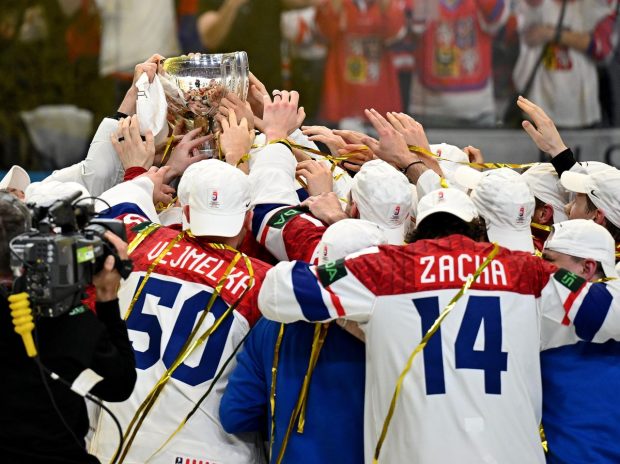Imagine winning your league without losing a game and still being criticised by supporters.
Vitor Pereira does not need to imagine. It happened to the Wolves manager more than 20 years ago.
In his second season as manager of Porto, Pereira won 24 of his 30 games and successfully defended the league title he had claimed in the previous season.
Advertisement
But supporters were unhappy with the style of play. They claimed it was too focused on possession and lacked thrills and spills.
It was one of the reasons Pereira departed the club and began the globetrotting phase of his career that continued with a move to Wolverhampton Wanderers in December.
In the past two decades, Pereira’s philosophy has changed. The Wolves head coach still favours a possession-based approach on the ball and an energetic, high-pressing method off it.
But what is ‘Vitor-ball’? “Before I was a coach, I was a player,” Pereira told a recent press conference. “As a player, I had an idea about a game with quality. It meant that in my mind, when I started as a coach, I wanted to create this game, which was a bit of a reflection of our personality.
“I wanted to create a game with quality, aggressiveness with the ball and without the ball, dominating. And when I started to work as a coach, I coached Porto in the youth teams. In that time, I had the best players in the country to play in that way and to work in the way that I want to play.
“I tried everything to create beautiful football, winning titles. If you look at my career, almost all the time I have been playing for titles, in different countries, fighting for titles. Then, when you come to the Premier League, you want to create a team and a style of game that is not for a small team, but it is for a big team. And this is my style. I want to create a team, a style, a quality style of playing.”

Pereira after winning at Old Trafford last month (Simon Stacpoole/Offside/Getty Images)
Since Wolves replaced Gary O’Neil with Pereira, the improvement has been dramatic.
The Portuguese took over a side second from bottom of the Premier League, with nine points from 16 games, and has since collected 32 points from 20 games, which would put Wolves in the top half of a table based only on results since Pereira arrived.
Advertisement
To the naked eye, the style of play has seemed markedly different, so it is something of a surprise to discover that many underlying statistics are similar to O’Neil’s spell at the helm.
Wolves’ average possession percentage is almost unchanged — actually down marginally from 48.1 per cent under O’Neil to 47.8 per cent under Pereira. And metrics rating the speed of play and pressing are similar, too.
A chart comparing the styles of play of all 20 Premier League teams, with Manchester City’s possession-based approach and Nottingham Forest’s counter-attacking method at either ends of the spectrum, puts Wolves in the middle.

And, while our graph only takes into account the period since Pereira’s arrival, a similar graph for the whole season shows almost no change.
So, Pereira has not arrived in the Premier League and implemented an extreme style of play, but there have been notable differences, as the average shape of the team during build-ups shows.
While the map of average positions under O’Neil is skewed by the former head coach’s switch from a back four to a back three in the early weeks of the season, it is clear that Pereira has given wing-backs Nelson Semedo and Rayan Ait-Nouri higher and wider roles.
And Pereira’s 3-4-2-1 system has been more clearly defined, with the dual No 10s behind centre-forward Jorgen Strand Larsen operating a narrower positions.

Wolves’ complete dominance of their home game against Leicester City in April, which ended in a 3-0 win, gave Pereira a chance to implement his preferred attacking style.
Multiple examples showed the wing-backs operating as attacking wingers, the back three spread wide across the pitch and midfielder Joao Gomes getting forward to support the trio of attackers.

This passage of play resulted in a goal for Matheus Cunha from an Ait-Nouri cross from the byline.

While Pereira has never operated with two strikers, January signing Marshall Munetsi’s knack of getting in the penalty area alongside Strand Larsen has offered Strand Larsen the kind of support he did not have previously.
While the Zimbabwe international’s limitations on the ball are clear, his energy, especially in the final third, has given Wolves an extra dimension to their play, as shown in this goal against Leicester, when Munetsi drew defenders away to allow Strand Larsen room to collect Matheus Cunha’s pass and finish.

Strand Larsen took full advantage to score just moments after missing an open goal.

And while Pereira’s basic team shape has remained unchanged from game to game, Munetsi’s willingness to support Strand Larsen has at times meant momentary switches to a 3-5-2 system, with Munetsi’s fellow No 10 dropping into midfield, as in this moment in the 1-0 home win against West Ham.

Wolves’ overall possession percentage has been largely unchanged, but there has been a clear commitment to building play from the back, as their use of goal kicks demonstrates. Under Pereira, a greater percentage of goal kicks have been taken short, allowing Wolves to draw opponents out before trying to find space behind them.

And this passage of play in the 4-2 win against Tottenham, which ended with a clear chance for Strand Larsen, demonstrates Wolves’ willingness to stay patient in possession under Pereira.

But the biggest single factor in the improvement under Pereira has been defensive solidity, which has stemmed primarily from three factors.
The January recruitment of Emmanuel Agbadou has brought athleticism and leadership to the heart of defence, the success at solving set-piece problems has helped Wolves stay in games, and the extra protection from midfield has taken some pressure off a back three that, in the final weeks under O’Neil, appeared permanently under pressure.
Advertisement
An expected goals-against figure of 1.44 per game under Pereira compared to 1.75 under O’Neil helps demonstrate how Pereira’s Wolves have restricted opponents to a lower quality of chances.
In the 16 games under O’Neil, 21 of the 40 goals Wolves conceded came from set pieces — more than double that of any other side in the league.
Under Pereira, just 24 goals have been conceded in 20 games, of which seven have come from set pieces — just 29 per cent compared to 52 per cent under O’Neil.
The restoration of confidence in defending corners and free kicks has been a massive factor in the turnaround.
So, too, has been the emergence of Brazilian duo Andre and Joao Gomes as Wolves’ undisputed midfield duo — a pair with clearly defined roles and the ability to dovetail to perfection.
Andre — a player given a high level of tactical freedom at previous club Fluminense — has become a model of discipline under Pereira, operating in front of the back three, making himself available to receive the ball under pressure, and snuffing out opposition attacks.
The Brazil regular has intercepted the ball 2.46 times per 1,000 opposition touches under Pereira, compared to 1.12 under O’Neil, when he often played second fiddle to former captain Mario Lemina.
And, while he has essentially lined up alongside his compatriot, Joao Gomes has been handed extra licence to press — winning 5.1 ‘high turnovers’ under Pereira compared to 4.1 under O’Neil.
The combination of the classy Andre and the ‘Pitbull’ Gomes has become the key feature of Pereira’s Wolves team.
Passes per defensive action is a metric that measures how many passes a team allows an opponent before attempting to break up play through pressing, tackling, fouling or making another defensive action — the lower the number, the more intense the press.
And, while Wolves’ intensity has dropped in recent weeks, there was a clear upward curve in Pereira’s early weeks as he moved his side away from the bottom three.

Yet while Pereira favours a high defensive line to help his side win possession high up the field, Wolves have defended slightly deeper so far under him than under his predecessor.

So perhaps the clearest difference between the final months of O’Neil and the early months of Pereira has been simplicity.
In a desperate attempt to arrest the alarming slump in form, O’Neil turned to increasingly complicated game plans and regular tweaks to counteract different opponents.
Without turning to extreme measures, Pereira has taken Wolves back to basics.
Advertisement
“It’s about our game,” he said in a recent interview with a group of newspaper and online journalists. “Of course, we look, we analyse the other team and we know that they like to do this or that, and we try to control that situation. But it is about what we can add to our game.”
Pereira’s style will inevitably evolve with some summer recruitment and a first Wolves pre-season around the corner.
It might even get closer to the possession-based, high-pressing ideals he set out more than 20 years ago. But so far, it has been about doing basic things better.
(Top photo: Vitor Pereira; by Jack Thomas/WWFC/Wolves via Getty Images)
This news was originally published on this post .







Be the first to leave a comment